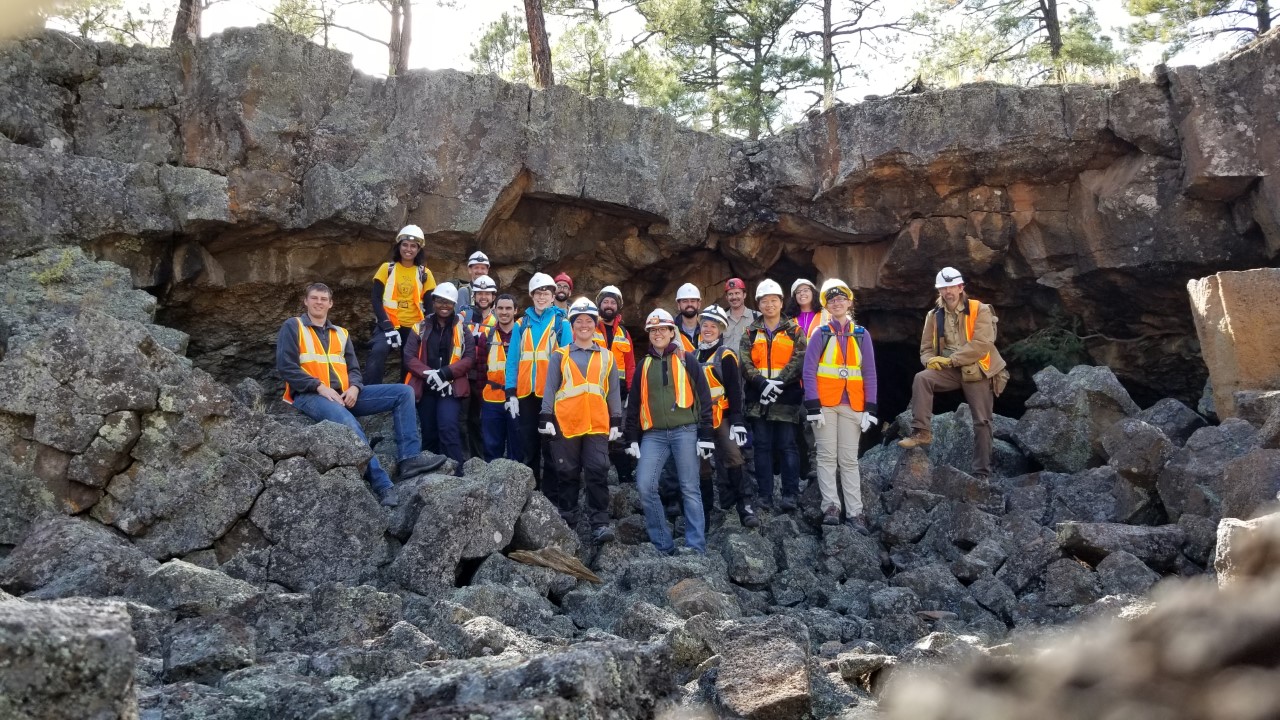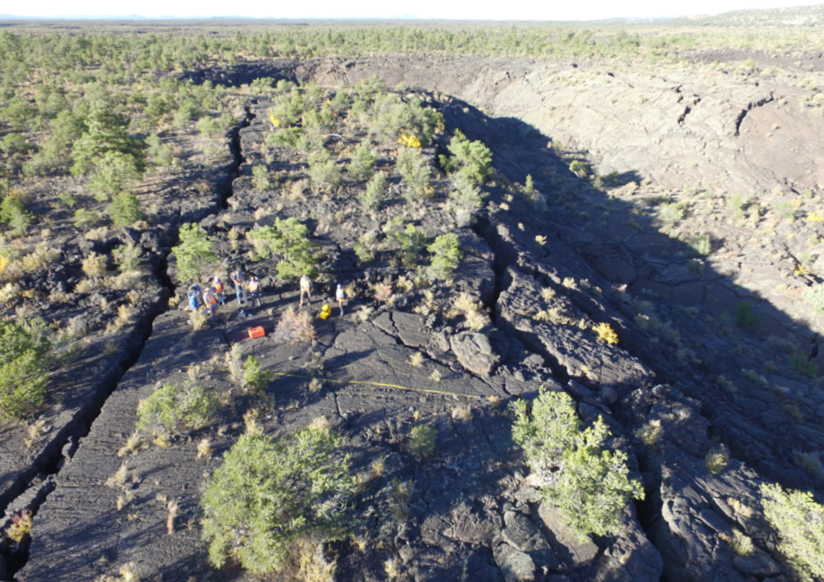LPL Field Trip Fall 2019
by Christopher Hamilton

For the Fall 2019 semester (October 17–21), the Lunar and Planetary Laboratory (LPL) graduate student field trip class (PTYS 594A) ventured to the Zuni–Bandera Volcanic Field in New Mexico. The volcanic field is part of the Jemez Lineament, which extends from central Arizona to northeastern New Mexico. The Jemez Lineament includes approximately 100 volcanoes, which erupted during the past 16 Ma. This semester’s field trip primarily focused on lava tubes within the Hoya de Cibola lava flow-field, lava stratigraphy and inflation features within McCarty's lava flow-field, and Bandera Crater.
During the first day of the field trip, the group met with members of the National Park Service and travelled with Ranger Nicholas (“Nick”) Poister to the Haltun Cave. This provided students with a unique opportunity to explore an exceptional lava tube system within the El Malpais National Monument. On the second and third days, the class examined 20 m (65’) thick lava flow units within the McCarty's lava flow-field. This approximately 3000-year-old lava flow-field was emplaced over older Hoya de Cibola lava units as well as Holocene alluvial sediments. McCarty's lava flow units include outstanding examples of inflation features, which formed as the flows were supplied by lava through internal pathways and gradually swelled like a balloon. Similar structures are identified on Mars and provide valuable information about eruption timescales. Additionally, using ground-penetrating radar (GPR) and Global Positioning System (GPS) measurements, the class examined McCarty's lava units, estimating their thickness and identifying buried contacts with older materials (i.e., lava and sedimentary units) as analogs for imaging subsurface interfaces within volcanic terrains on Mars using the shallow radar (SHARAD) instrument. During the final day of the field trip, they visited Bandera Crater and an “ice cave” formed where meteoric water infiltrates into a cold lava tube to form perennial ice deposits.
This semester’s field trip involved the increased usage of high-tech (e.g., GPR and GPS) and low-tech (e.g., notebooks, measuring tape, compass, and hand lens) tools to develop detailed measurements and descriptions, with a focus on lava tube and other lava flow structures as analogs for volcanic terrains on the Moon and Mars, as well as elsewhere in the Solar System. Next semester, the field trip will explore a different region of the Southwest, with a trip to the Mojave Desert.


